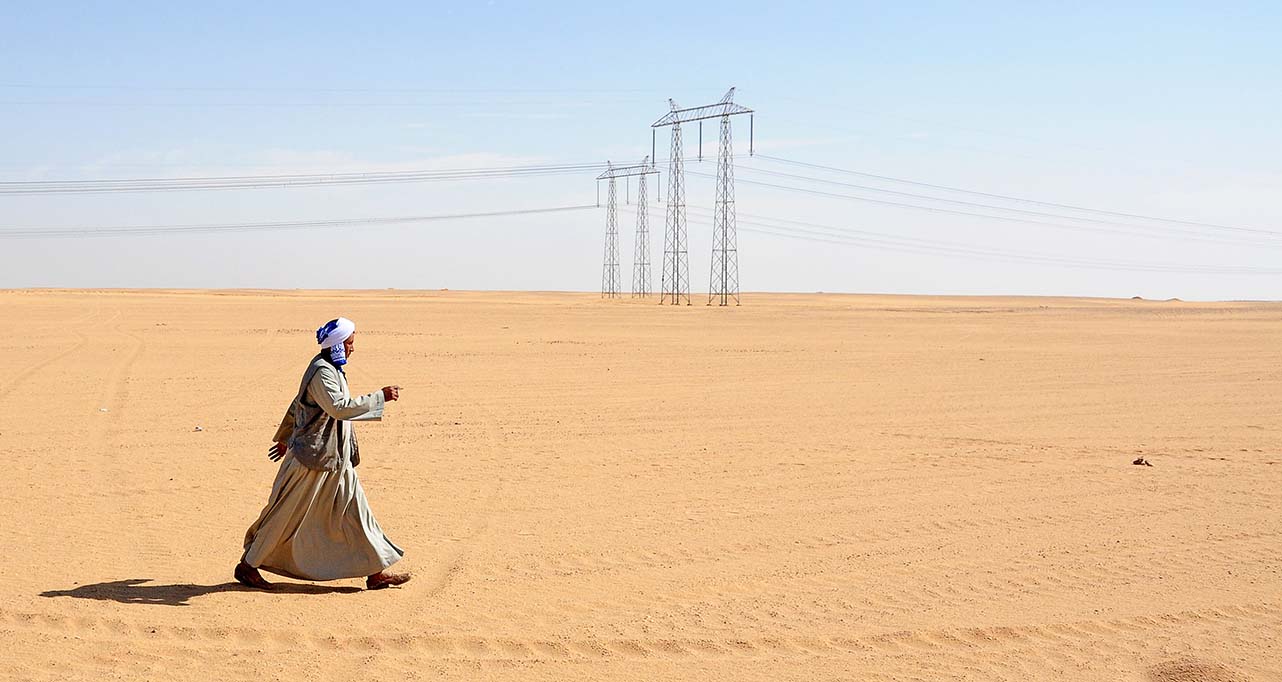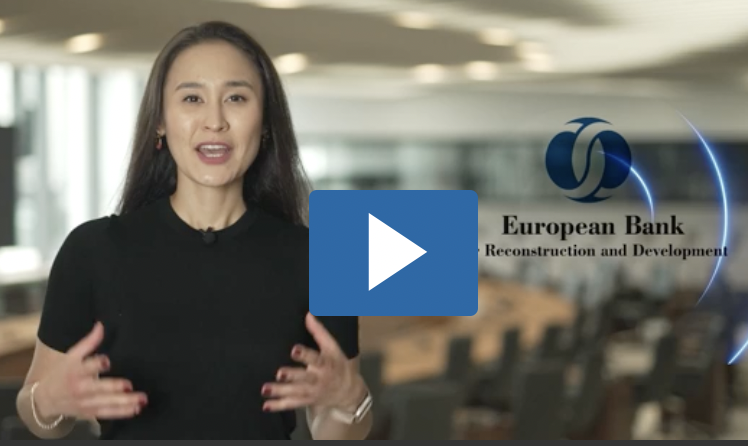- EBRD forecasts average growth of 3.7 per cent in SEMED region in 2025
- Region has benefited from a strong recovery in tourism and increased remittance flows
- Average growth expected to slow to 3.2 per cent in 2026
According to the EBRD’s latest Regional Economic Prospects report, economic growth in the southern and eastern Mediterranean (SEMED) region exceeded expectations in the first half of 2025, averaging 3.6 per cent, up from 1.2 per cent in 2024. Economic growth in the SEMED region is now forecast to average 3.7 per cent across 2025 as a whole; however, the EBRD expects growth to then slow to 3.2 per cent in 2026.
The SEMED region has benefited from a strong recovery in tourism, increased remittance flows and improving external balances, all of which have helped to drive the stronger performance. Inflation has moderated significantly in Egypt, Tunisia and Morocco as food price pressures have eased.
The new report, entitled “Under pressure”, foresees growth averaging 3.1 per cent in 2025 across all the regions where the Bank invests, before picking up to stand at 3.3 per cent in 2026. This reflects the various headwinds facing the Bank’s economies, including persistent global geopolitical tensions, increased competition from China in export markets and constrained fiscal space.
The SEMED economies in detail
Egypt
Annual economic growth exceeded expectations, rising from 2.4 per cent in July 2024 to 4.2 per cent in March 2025, driven by a recovery in the manufacturing sector following a deep contraction and strong performance in wholesale and retail trade and transport. Remittances increased by 82.7 per cent year on year, while foreign investors returned to the short-term government debt market, owning 44.7 per cent of outstanding T-bills as of March 2025.
Annual inflation averaged 15.7 per cent between January and July 2025, half of the rate observed during the equivalent period in 2024.
Net international reserves increased to stand at US$ 49 billion in August 2025, their highest level in over 20 years. However, debt levels remain elevated, with servicing costs expected to absorb 65 per cent of budget revenue in the 2025/26 fiscal year, while slow progress in the area of structural reform continues to hold back potential growth.
Output is expected to expand by 4.8 per cent in 2025 and 4.5 per cent in 2026 against the backdrop of macroeconomic stabilisation and a gradual improvement in investor sentiment. However, significant downside risks remain, relating to a further escalation of regional conflicts and a lack of progress in the area of structural reform, which could possibly result in a further delay to the implementation of the IMF-supported reform programme.
Iraq
Real GDP contracted by 2.3 per cent in 2024, as oil GDP declined by an estimated 6.2 per cent due to extended OPEC+ production cuts (including voluntary cuts by Iraq) in response to weak global demand and low oil prices.
Growth in the non-oil sector moderated significantly to stand at an estimated 2.5 per cent in 2024, reflecting a slowdown in public investment and a surge in imports. Annual inflation fell from 4 per cent in 2023 to 2.7 per cent in 2024 and -0.6 per cent in June 2025 on the back of lower global food prices.
The current account surplus shrank from 7.5 per cent of GDP in 2023 to 2 per cent in 2024 as a result of subdued oil exports, a surge in goods imports and an increased outflow of remittances. International reserves stood at US$ 100 billion at end-2024, covering 11 months of imports. The fiscal deficit rose to 4.2 per cent of GDP in 2024 and total public debt increased to 47.2 per cent of GDP.
GDP growth is expected to rise to 2.5 per cent in 2025 as oil production cuts are reversed, before moderating to stand at 1.4 per cent in 2026. In the medium term, fiscal consolidation – notably on the expenditure side – will be essential to maintain macroeconomic stability. Risks to the outlook stem from global and regional geopolitical tensions and their potential impact on the oil market and regional conflicts.
Jordan
Economic activity picked up in the first quarter of 2025, with growth reaching 2.7 per cent year on year, led by manufacturing, financial services and agriculture. However, growth is expected to slow, averaging 2.4 per cent across 2025 as a whole, before picking up slightly to stand at 2.6 per cent in 2026, supported by a recovery in tourism and the re-opening of the Syrian market to Jordanian businesses.
There are significant downside risks to the medium-term outlook stemming from weaker global demand and regional instability.
Annual inflation averaged 1.9 per cent over the period from January to July 2025 – up slightly from 1.7 per cent in the equivalent period in 2024 – with food prices easing. The current account deficit fell slightly, with exports growing by 8.6 per cent year on year in the period from January to May 2025 while tourism receipts increased by 9 per cent despite regional instability.
Lebanon
Following a sharp 7.5 per cent contraction in 2024, economic growth is projected to reach 1.9 per cent in 2025, driven by a gradual rebound in tourism and limited reconstruction inflows, rising to 2.9 per cent in 2026 as geopolitical tensions subside and critical banking-sector reforms gain traction, improving the prospects for an IMF-supported programme. However, risks from regional instability remain present, and the resumption of international donor support will be a key condition for a robust recovery.
The current account deficit declined to 18.2 per cent of GDP in 2024 despite a fall in tourism income, supported largely by remittances from abroad. In parallel, improved revenue collection resulted in a fiscal surplus of 1.1 per cent of GDP, but financial resources are still severely limited and public spending remains largely curtailed. Public debt was estimated at 164 per cent of GDP at end-2024.
Morocco
Annual growth averaged 4.7 per cent in the first half of 2025, up from 3.8 per cent in 2024. Annual inflation fell to an average of 1.2 per cent in the period from January to July 2025, owing to the easing of food, fuel and transport prices.
The fiscal deficit fell to 3.9 per cent of GDP in 2024, 0.4 percentage point below the budget target, on the back of higher tax revenues. The government is aiming to reduce the fiscal deficit to 3.5 per cent of GDP in 2025 and 3.0 per cent in 2026. The public-debt-to-GDP ratio fell to 70 per cent in 2024, down from a peak of 72 per cent in 2020.
Goods exports expanded by 5.8 per cent in 2024, led by phosphate and automotive sales, alongside a 20 per cent surge in annual tourist arrivals (which rose to 17.4 million). Tourist arrivals then increased by a further 16 per cent year on year in the period from January to July 2025.
Official reserves stood at US$ 45 billion in August 2025, up 12 per cent year on year and equivalent to more than five months of imports.
Growth is expected to average 4.2 per cent in 2025 and 4.0 per cent in 2026, supported by public investment. Downside risks relate to a potential slowdown in European markets that could dampen remittances and demand for exports and the possibility of adverse weather shocks.
Tunisia
Annual economic growth in Tunisia accelerated from 1.6 per cent in 2024 to 2.4 per cent in the first half of 2025, led by agriculture, construction, trade, and the manufacturing of mechanical and electrical equipment.
Annual inflation averaged 5.6 per cent in the period from January from July 2025 as food prices eased, after peaking above 10 per cent in early 2023.
The fiscal deficit declined from 7.6 per cent of GDP in 2023 to 6 per cent in 2024 on the back of higher revenue mobilisation, lower subsidies for basic goods and contained wage increases in the public sector. The current account deficit fell to 1.5 per cent of GDP in 2024, supported by increased tourism and remittance receipts, which rose by more than 8 per cent year on year in the period from January to July 2025.
International reserves stood at US$ 8.5 billion in August 2025, covering more than three months of imports.
Growth is expected to average 2.1 per cent in 2026, with slow improvements to the business environment and subdued investment continuing to weigh on the outlook and downside risks stemming from external vulnerabilities that could exacerbate the impact of global economic shocks.




